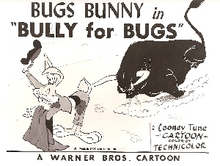
What's Opera, Doc? is a 1957 American Warner Bros. Merrie Melodies cartoon directed by Chuck Jones and written by Michael Maltese. The short was released on July 6, 1957, and stars Bugs Bunny and Elmer Fudd.
Edward Selzer was an American film producer and publicist who served as head of Warner Bros. Cartoons from 1944 to 1958. He served in the US Navy and fought as a Golden Gloves boxer. He won a boxing exhibition for the Navy and was awarded with a weekend pass. While out on leave he met a New York chorus girl named Laura Cohn; he later married Laura in 1927 and relocated to Los Angeles where they had two children; Phyllis and Robert.

Hiawatha's Rabbit Hunt is a 1941 Merrie Melodies cartoon directed by Friz Freleng. Mel Blanc voiced all characters. This film was nominated for the Academy Award for Best Short Subject (cartoons), but lost to Walt Disney's Lend a Paw. This was the first Bugs Bunny cartoon directed by Friz Freleng. The short makes several direct references to The Song of Hiawatha, an epic poem by Henry Wadsworth Longfellow.

Elmer's Candid Camera is a 1940 Warner Bros. Merrie Melodies cartoon short directed by Chuck Jones. The short was released on March 2, 1940, and features Elmer Fudd and an early Bugs Bunny prototype.
Rabbit Seasoning is a 1952 Warner Bros. Merrie Melodies cartoon directed by Chuck Jones. Released on September 20, 1952, the short stars Bugs Bunny, Daffy Duck and Elmer Fudd.
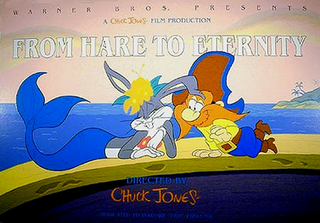
From Hare to Eternity is a Looney Tunes cartoon directed by Chuck Jones released on November 4, 1997.

Long-Haired Hare is a 1949 American animated short film directed by Chuck Jones and written by Michael Maltese. It was produced by Warner Bros. Cartoons and distributed by Warner Bros. Pictures as part of the Looney Tunes series, and was the 60th short to feature Bugs Bunny. In addition to including the homophones "hair" and "hare", the title is also a pun on "longhairs", a characterization of classical music lovers. Nicolai Shutorov provides the singing voice of Giovanni Jones.

Frigid Hare is a Warner Bros. Merrie Melodies short, released on October 8, 1949. It is directed by Chuck Jones and written by Michael Maltese, and features Bugs Bunny. The title can be seen as a simple play on "frigid air" and/or on the refrigerator brand called "Frigidaire".

8 Ball Bunny is a Warner Bros. Looney Tunes cartoon directed by Chuck Jones. The short was released on July 8, 1950, and stars Bugs Bunny and Playboy Penguin.

The Bugs Bunny/Road Runner Movie is a 1979 American animated comedy package film directed by Chuck Jones, consisting of a compilation of classic Looney Tunes/Merrie Melodies shorts and newly animated bridging sequences hosted by Bugs Bunny. The bridging sequences, which had been produced in 1978, show Bugs at his home, which is cantilevered over a carrot-juice waterfall. The film was released to celebrate the 40th anniversary of Bugs Bunny.

A Hare Grows In Manhattan is a Warner Bros. cartoon in the Merrie Melodies series, released on March 22, 1947. It was produced by Edward Selzer and directed by I. Freleng. The short features Bugs Bunny.
Beanstalk Bunny is a 1955 Warner Bros. Merrie Melodies cartoon directed by Chuck Jones. The short was released on February 12, 1955, and stars Bugs Bunny, Daffy Duck and Elmer Fudd. The cartoon's story is derived from the fairy tale "Jack and the Beanstalk".
Hare-Way to the Stars is a 1958 American animated science fiction comedy short film directed by Chuck Jones and written by Michael Maltese. The short was released by Warner Bros. Pictures on March 29, 1958 as part of the Looney Tunes series, and stars Bugs Bunny and Marvin the Martian. The title is a play on the song "Stairway to the Stars."
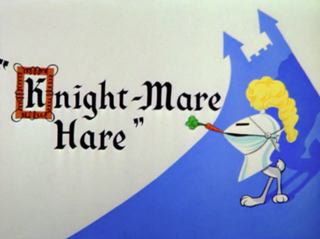
Knight-mare Hare is a 1955 Warner Bros. Merrie Melodies theatrical cartoon directed by Chuck Jones and written by Tedd Pierce. The short was released on October 1, 1955, and stars Bugs Bunny.
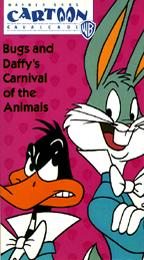
Bugs and Daffy's Carnival of the Animals is a 1976 live action/animated television special featuring the Looney Tunes characters Bugs Bunny and Daffy Duck and directed by Chuck Jones.
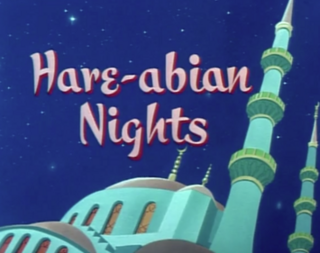
Hare-abian Nights is a 1959 Warner Bros. Merrie Melodies cartoon directed by Ken Harris of Chuck Jones' unit. The short was released on February 28, 1959, and stars Bugs Bunny. The cartoon was animated by Harris and Ben Washam.

Hare-Breadth Hurry is a 1963 Warner Bros. Looney Tunes cartoon directed by Chuck Jones and Maurice Noble. The cartoon was released on June 8, 1963, and stars Bugs Bunny and Wile E. Coyote.
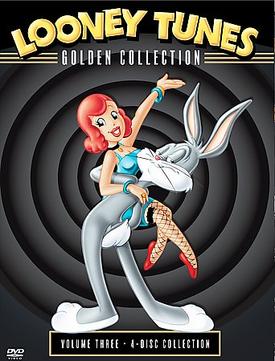
Looney Tunes Golden Collection: Volume 3 is a DVD box set from Warner Home Video that was released on October 25, 2005. It contains 60 Looney Tunes and Merrie Melodies theatrical short subject cartoons, nine documentaries, 32 commentary tracks from animators and historians, 11 "vintage treasures from the vault", and 11 music-only or music-and-sound-effects audio tracks.
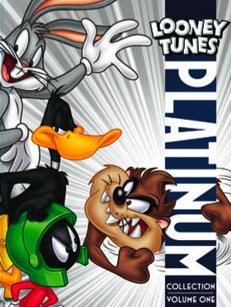
Looney Tunes Platinum Collection: Volume 1 is a Blu-ray Disc and DVD box set by Warner Home Video. It was released on November 15, 2011. It contains 50 Looney Tunes and Merrie Melodies cartoons and numerous supplements. A DVD version of the box set was released on July 3, 2012, but contained no extras.
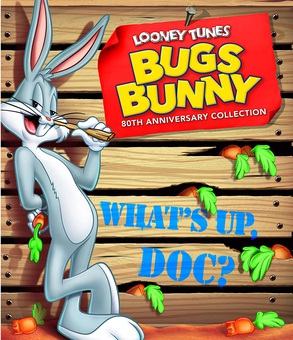
Looney Tunes: Bugs Bunny 80th Anniversary Collection is a Blu-ray Disc box-set released by Warner Bros. Home Entertainment on December 1, 2020. It contains 60 Looney Tunes and Merrie Melodies shorts starring Bugs Bunny and numerous bonus features and supplementary content. The set's packaging includes a slip book, a booklet, and a collectible Bugs Bunny Funko! POP doll.
